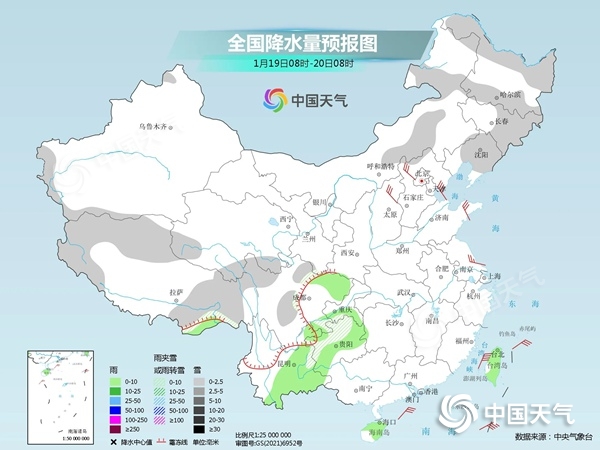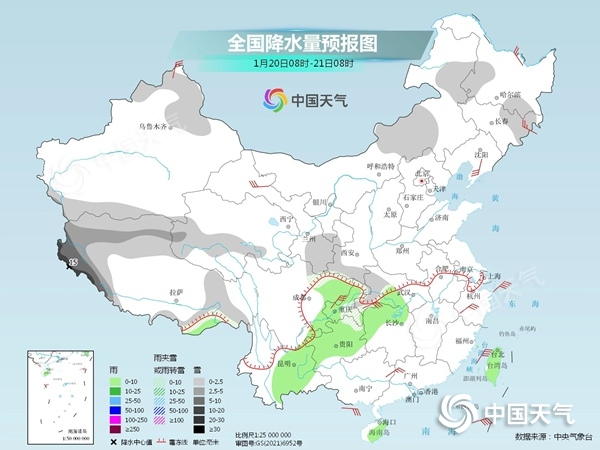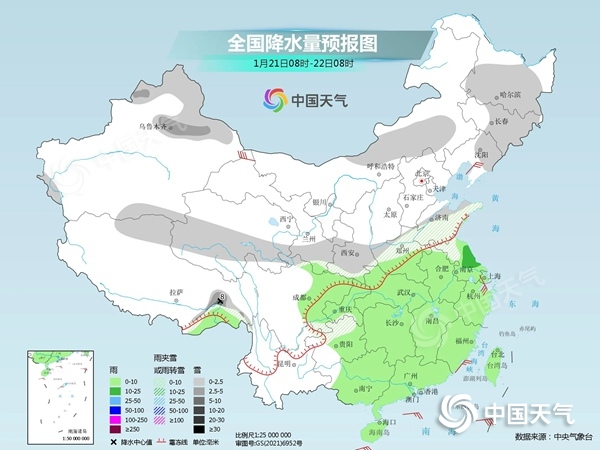On the eve of the Spring Festival, there is little rain and snow in most parts of the country, and the temperature drop in Northeast China and other places is so severe that it is rare in the same per
Cctv newsAccording to the news of China Weather Network, the weather pattern of rain and snow is scarce in most parts of the country today and tomorrow (January 19th to 20th), and the day after tomorrow, that is, on New Year’s Eve, the rainfall in the south increased. In terms of temperature, in the next ten days, under the frequent influence of cold air, the temperature in Northeast China and other places will drop sharply, and the local minimum temperature may approach or even break the historical record of the same period. Public travel needs to do a good job of cold protection and warmth.
In the next ten days, the cold air will be active, and the lowest temperature in Northeast China and other places may approach or break the historical record for the same period.
During the March 9th this year (January 9th to 17th), although most parts of China experienced a great turning point from warm to cold, the national average temperature was still -3.7℃, which was the third warmest in history. Yesterday, it entered the "April 9th", and most of the country was in a period of intermittent temperature rise of cold air.
In the next ten days, the cold air affecting our country will be active. Among them, today and tomorrow, cold air will bring strong winds and cool weather to the northern region. It is estimated that the temperature in North China, Northeast China and Huanghuai will drop by 4 ~ 8 C, 10 ~ 12 C in some areas and 14 C in local areas. It is accompanied by 4 ~ 6 winds and gusts of 7 ~ 8. On the morning of the 21st, the daily minimum temperature in northern Heilongjiang will approach or exceed the historical extreme value in the same period.
From 22nd to 24th, a new cold air will come one after another, which will affect the central and eastern regions of China. Compared with the previous one, it is expected that the temperature will drop by 4 ~ 8℃ in most areas, and the temperature will drop by 10 ~ 14℃ in central Inner Mongolia, south-central Northeast China, northeastern Jiangnan and other places, and the local temperature will be above 16℃. From 26th to 27th, there will be weak cold air affecting the central and eastern regions.
Under the continuous influence of cold air, the temperature in Northeast China has dropped sharply, and the cumulative drop of the highest temperature in Harbin, Changchun and Shenyang is about 15℃. In the northeast of Inner Mongolia and the north-central part of Heilongjiang, the local minimum temperature may approach or even break the historical record for the same period.
Among the cities, the lowest temperatures in Harbin on the 22nd, Changchun on the 22nd, and Shenyang on the 23rd will hit new lows since the winter of this year. It is freezing in the cold, which coincides with the Spring Festival holiday. The public should take special measures to keep warm and prevent frostbite.
Today and tomorrow, the rainy and snowy New Year’s Eve in southwest and northeast China will start to increase the precipitation in the south.
In terms of precipitation, yesterday, most of the precipitation in the country was scarce, and light snow and local snow appeared in parts of northeastern Inner Mongolia, central and western Heilongjiang, southeastern Qinghai and northern Sichuan Plateau. Light rain occurred in parts of Chongqing, central and eastern Sichuan and eastern Yunnan.
Today and tomorrow, most of the country will continue to maintain the weather pattern of scarce rain and snow. Rain and snow mainly appear in the southwest and northeast regions, and the precipitation in the south will increase the day after tomorrow.
The Central Meteorological Observatory predicts that there will be light snow or sleet in parts of central and eastern Inner Mongolia, most of Northeast China, northern and eastern Tibet, northern Sichuan Plateau, western and northern Guizhou today. There is light rain in parts of southeastern Tibet, northern and southeastern Sichuan Basin, central and southern Chongqing, central and southwestern Guizhou, central and eastern Yunnan, northern and eastern Hainan Island, and most of Taiwan Province Island.

Tomorrow, there will be small to medium snow or sleet in parts of central and eastern Inner Mongolia, southern Heilongjiang, eastern Jilin, northern and southern Xinjiang, northern Tibet, southern Qinghai, southeastern Northwest China, western Jianghan, northern Sichuan Basin, southeastern Chongqing, etc. Among them, parts of western Tibet and other places have heavy snow; There is light rain in parts of southern Hubei, central and northern Hunan, eastern Sichuan Basin, western Chongqing, most of Guizhou, central and eastern Yunnan, central and eastern Hainan Island and Taiwan Province Island.

The day after tomorrow, there will be small to medium snow or sleet in parts of southeastern Inner Mongolia, most of Northeast China, southern Xinjiang basin and north, northern and southeastern Tibet, southeastern Northwest China, northern Huanghuai and western Jianghan, among which there will be heavy snow in parts of southeastern Tibet. There are light rains in parts of western Huanghuai, Jianghuai, Jianghan, Jiangnan, eastern Southwest, South China and Taiwan Province Island, among which there are moderate rains in parts of central Jiangsu.

On the eve of the Spring Festival, the weather in most parts of the country is generally conducive to travel. In some areas, attention should be paid to preventing the adverse effects of slippery roads and reduced visibility caused by rain and snow. In addition, on New Year’s Eve, while the rain and snow in the south increase, the sense of coldness will also intensify, and the public needs to add clothes to keep warm in time.